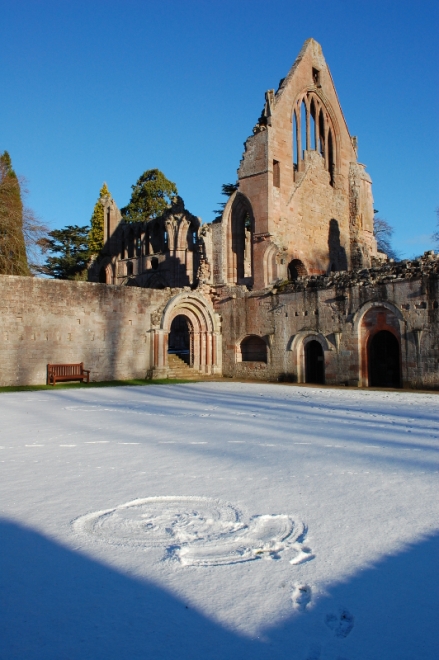I know the sound so well but it had been nearly four years since I’d last heard it: the crunch of snow under my shoes. It has to be one of my favourite sounds in the world; it is the sound of home. I therefore suspect that the thin but fresh, white blanket that covered the Borders when I visited the weekend before last is one reason why I have a new monastic site to add to my list of favourite ruins.
Unlike many other abbeys and priories that are now in town centres, Dryburgh Abbey is reachable by B-roads, surrounded by parkland and next door to nothing but a quiet hotel. I wandered in in bright midday sunshine under blue skies, and save for a handful of other visitors who disappeared around a corner, I had the place for myself. I walked through doorways and up and down stairs, and just stood looking at the stone walls and arches thinking how I used to be such a Gothic girl through and through but how the Romanesque was now definitely growing on me.
It was so peaceful. All hurry and haste left me, and if I turned my ear away from the distant hum of modern life I could imagine what Dryburgh must have been like, once upon a time. Great tits sang in the trees outside the Abbey walls, and perhaps it was because I could hear the snow under my shoes but I had a quick thought like a flight of a bird that comes from hiding and is gone before you know it: I would live here.


